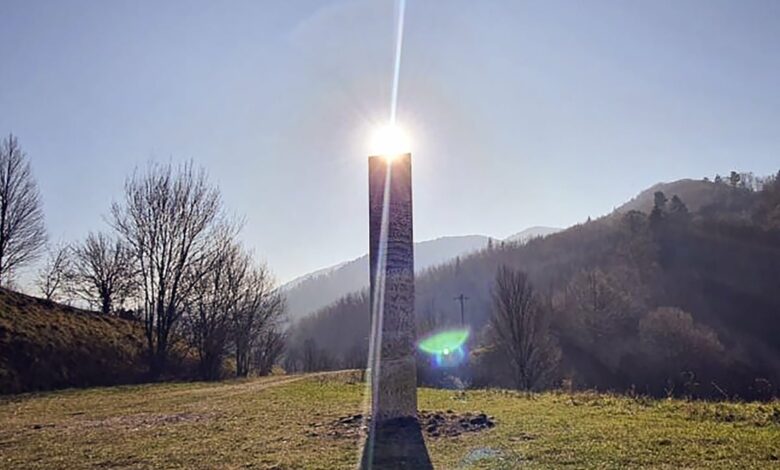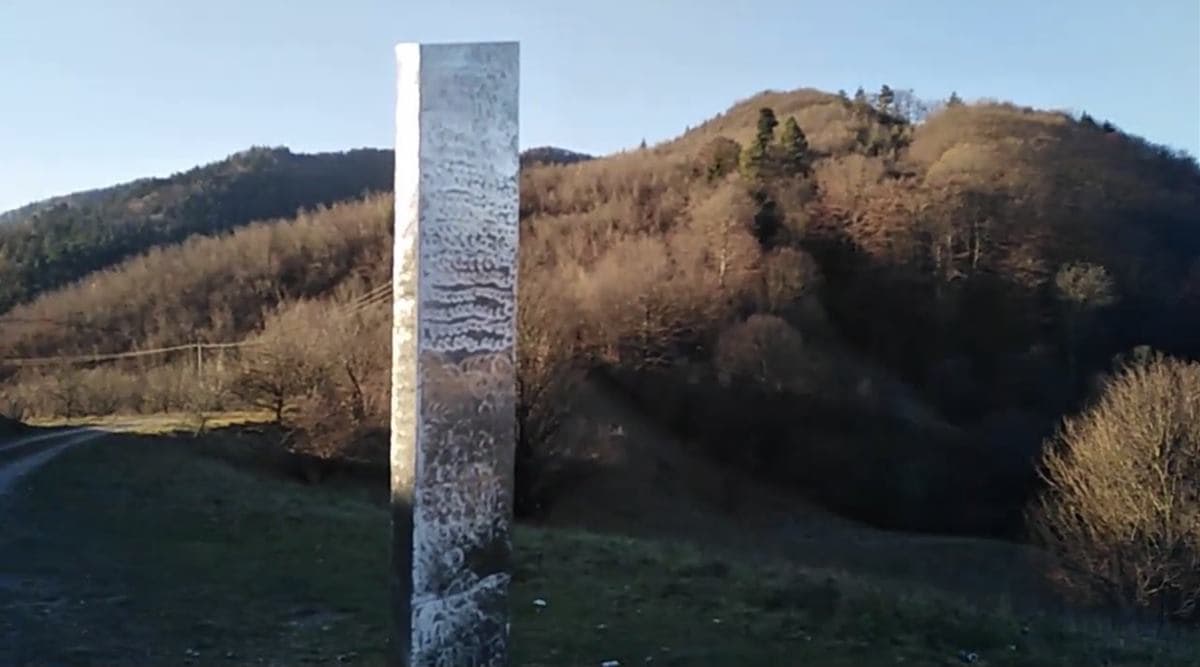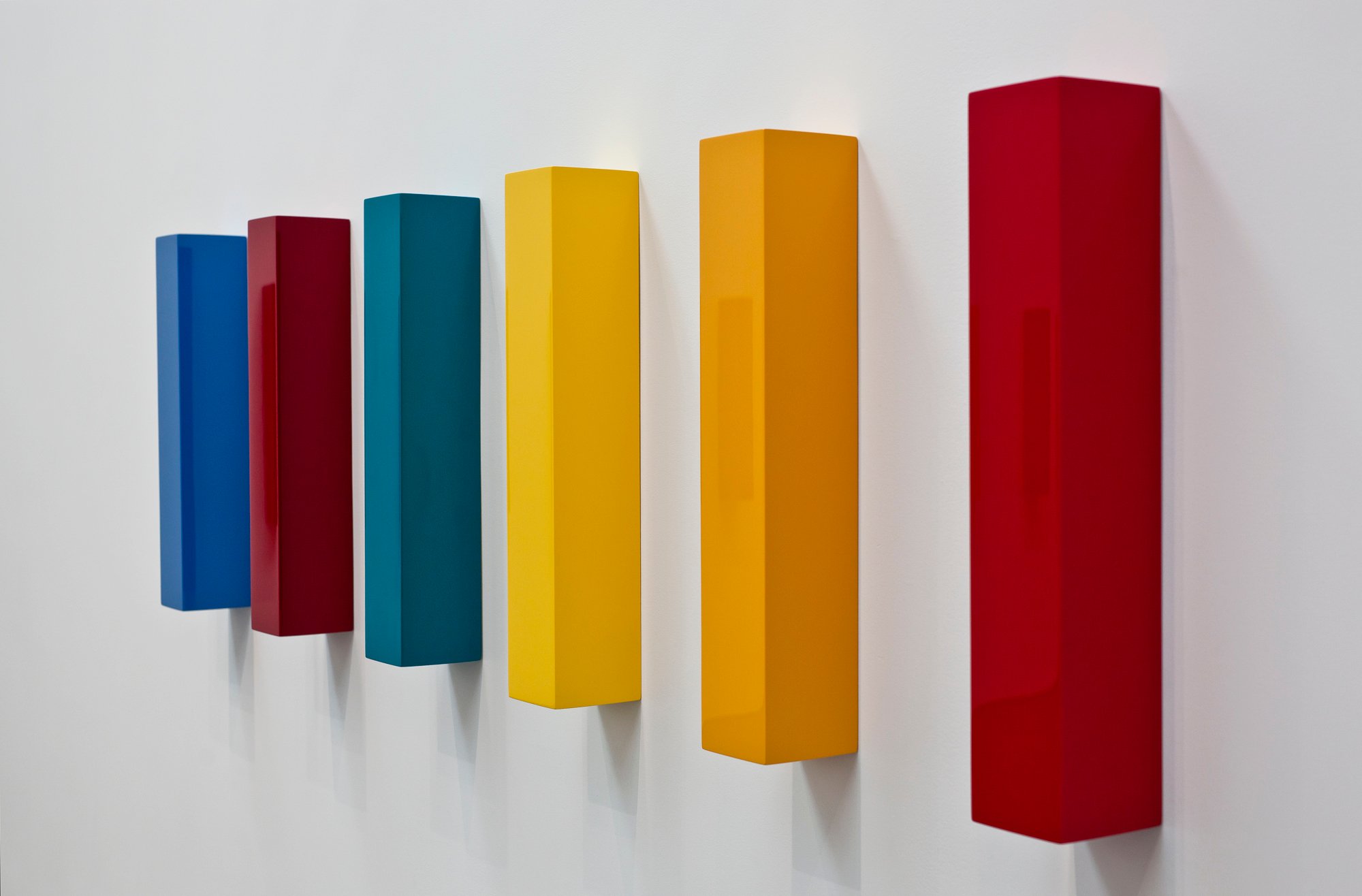After Utah And Romania, It’s Poland’s Time To Get Involved In A Monolith Hide And Seek Mystery in 2020 | An Alien At Work Or Is It Some Pandemic Boredom’s Fantasy Remake?

After Utah And Romania, It’s Poland’s Time To Get Involved In A Monolith Hide And Seek Mystery in 2020 | An Alien At Work Or Is It Some Pandemic Boredom’s Fantasy Remake?
Two weeks ago, biologists working for the Utah Department of Natural Resources were in a helicopter surveying the local bighorn sheep population when they noticed something weird: It was a three-sided, ten-foot-high sculpture installed in the middle of a desert, a location so remote that even though the sculpture had been there for years, no one had ever reported seeing it.
/cdn.vox-cdn.com/uploads/chorus_asset/file/22144634/monolith.jpg)
On social media, of course, the overarching response was, Aliens! Which would be very interesting, very 2020, and Very good for sales of An Absolutely Remarkable Thing, which basically predicted this entire affair and it really does sound like a parable.
We mean scientists are literally counting sheep, the cliché of how to fall asleep when they are roused into a new and dramatic sort of consciousness by an otherworldly artwork. Soon afterward, despite attempts to keep the location a secret, people figure out where the sculpture is and begin to make pilgrimages, leaving all kinds of human detritus behind–from tire tracks to toilet paper– and the sculpture mysteriously disappears. Oh right, that’s the other thing. The sculpture mysteriously disappeared.
“The metal structure has been removed, Utah officials said on Saturday, adding that they had not taken it down.” Wait for what? As dependent clauses go, “adding that they had not taken it down” is doing a lot of work. But anyway, it wasn’t aliens. Probably. American deserts are home to a lot of artworks that respond to or involve stark landscapes. Like there’s the famous Spiral Jetty on the shore of the Great Salt Lake. Near Marfa, Texas, there’s the fake Prada store that has become a popular tourist destination.

And outside of Wendover, Utah, you can find Nancy Holt’s Sun Tunnels, which, like a lot of my favorite art, cannot really be described or photographed effectively; Sun Tunnels frames the landscape and shapes sunlight in so many weird and astonishing ways that at least when I visited it, I felt something of what Rudolph Otto called the mysterium tremendum, the feeling of awe and fear and fascination one experiences when encountering an overwhelming mystery.
Like it’s one thing for art to be merely masterful, to depict a scene or experience so real that it’s really impressive. Gertrude Stein wrote that when people encounter that kind of art, “it excites them a little but it does not really thrill them,” and what I’m after is that feeling of thrill, those transitory enchanted moments when humans experience something commensurate to their capacity for wonder, to borrow a phrase from The Great Gatsby.
So, who made the Utah Monolith? Initial speculation centered on John McCracken, who did make similar sculptures, and whose famous New York gallerist did say, “I believe this is definitely by John,” but there is a big problem with that theory, which is that satellite photographs tell us that the obelisk was installed sometime in 2016, and McCracken died in 2011. But whoever installed the work didn’t just prop up a three-sided mirror in the desert: They cleared brush around the site, and used a concrete saw to cut into the stone to serve as a foundation for the sculpture.

This was profoundly intentional. For me, the bigger question is not who made it, but why I find it so interesting, and why other people did, too. There’s something about the machine-ness of the obelisk in that landscape that’s fascinating, the contrast between the straight lines and right angles of human work, and the curves and jagged edges of earthwork.
Be that as it may, sincerely, scientists don’t think the stone monument itself is remarkable; what gets me is that it was hanging tight from us all this time and we didn’t think about it, and afterward once we thought about it, it vanished very quickly. There are things in life that aren’t there until you notice them, and there are things in life that are there until you notice them.
So, for what reason did it vanish? Perhaps the makers of stone monuments were worried about the legitimate and moral implications of making workmanship without authorization on open land. Possibly they just made it for themselves. Perhaps the little outsiders got what they required. The maybes are fundamental to what in particular makes workmanship feel instinctive and exciting to me. I realize its human instinct to look for answers furthermore.
The internet is abuzz with speculation of alien activity after two monoliths mysteriously appeared and then disappeared over the last month. The first monolith was spotted in Utah weeks after which another sprung up in Romania. Who placed them there and what happened to them? 2020 is not done cracking jokes on us, you must be familiar with the news of a mysterious monolith appearing in the middle of a desert in Utah in November. No one knows how it got there and as if finding that out was not difficult enough, we now have a deepening mystery.
Around the 27th of November this monolith disappeared from Utah, a day later a similar structure was spotted in northern Romania. what is going on? Who is planting and removing these monoliths? Are aliens at work? Utah’s bureau of land management says the monolith was removed by an unknown party.A photographer named ross Bernice has a story to tell.
He says he saw four men destroy the monolith and carry its pieces with them. Leave no trace the man told the photographer and his friends. What about the monolith in Romania? This one was discovered. Again, no one knows how it got there. the structure disappeared on the 2nd of December. Records tell us this isn’t the first time such migrating monoliths are showing up.

Seattle had one such experience in 2001 that the monolith too had disappeared two days later. No one knows who was behind it. Whoever is behind this may be a fan of the monolith in Arthur C Clarke’s book 2001 as a space odyssey. And the Utah and Romania monoliths could be products of their pandemic boredom that said the mystery is yet to be Solved.




